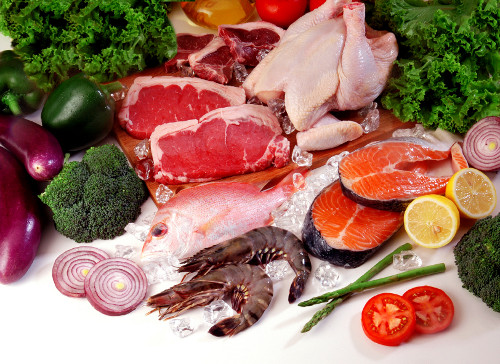The Paleo diet is all about improving the quality of your modern diet. It is based on the theory that today’s genes are actually the result of life conditions that were formed more than a million years ago in our evolution -- the era of the caveman.
Since farming and the cultivation of plants like wheat have only been in existence for about 10,000 years, our bodies have not adapted to properly digest these food sources. It takes far longer for humans to adapt their metabolism and physiology to different lifestyles. Humans have not had enough time to adapt our genes to eating grains, legumes and dairy products, which is why so many people have had so many digestive issues with the typical diet of today’s society.
The Paleo diet is based around what the cavemen typically ate: fresh fruits, vegetables, and meats. This means staying away from processed foods. In a nutshell, the Paleo diet teaches you that if it comes in a box, don’t eat it. However, there are many foods that the Paleo diet is based around. A key to the Paleo diet is eating lean cuts of meat. You can also eat some kinds of organ meats like liver and tongues. Although the cavemen did not indulge themselves in a diet of dairy products, they did eat eggs. However, you should limit yourself to six eggs a week. Nuts can also be enjoyed while following the Paleo diet. They are great sources of monounsaturated fats which are the “good” kinds of fats. Nuts help to lower cholesterol, reduce the risk of heart disease and are also credited with reducing the risk of some cancers like breast cancer. However, if you are following the Paleo diet in order to loose weight, you should limit the amount of nuts that you eat. Nuts also contain calories. But as you stay on this diet, your metabolism will increase, which means that you can eat more nuts later on.
While a great guideline for the foods to stay away from is that if it comes in a box, don’t eat it, there are other off-limit foods in the Paleo diet that do not “come in a box.” As you might guess, the cavemen did not have soda machines in their caves, so sugary drinks like soda are off limits. Actually, sugar is off limits entirely. That includes syrups and sweeteners. Because grains are not consumed on the Paleo diet, all food products that are made with grains are off limits, as well including pancakes, cookies, pasta, rolls, etc. Plus, because the cavemen did not eat dairy foods like butter, cheese, cream, etc., they are also off limits.
Although the Paleo diet limits many typical food choices, there are plenty of benefits to following this diet. The Paleo diet is mainly made up of high-protein meals. Research shows that if the average person eats a high-protein diet for six months, they could loose between ten to fifteen pounds. That’s without increasing physical activity. You could loose even more weight if you increased your physical activity, making the Paleo diet a great choice for anyone who wants to loose weight or who just wants to become overall healthier.
RECOMMENDED READINGS:








